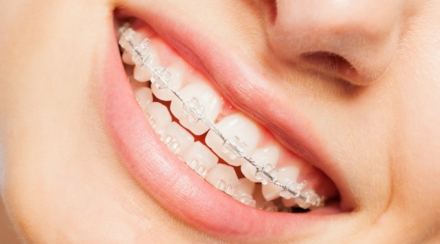Your step-by-step guide to getting the best orthodontic treatment for your child
A person’s smile is a big deal. Fixing it is an investment in your child’s health and confidence as they grow. You want to know you’re not only getting what you pay for, but that you are in safe hands. Good orthodontic treatment can last a lifetime – but bad orthodontic treatment can too. That’s why we can’t stress enough the importance of seeing a specialist orthodontist.
As a parent, you want to safeguard the health of your child’s teeth. Seeing a specialist orthodontist for their orthodontic care can help you to feel confident that you’re doing everything in your power to give them the best possible treatment and care.
Here is a step-by-step guide to your orthodontic journey.
What’s the optimum age to start treatment?
The best time to see an orthodontist is as soon as you notice something wrong with your child’s bite or smile. Only a specialist orthodontist can advise you on what treatment is best, and when is the best time to correct the problem.
Many teenagers get orthodontic treatment, because that allows the orthodontist to work with the way the mouth, teeth and jaw are developing. But children younger can also be taken to an orthodontist. If their mouth and teeth problems are affecting their confidence and lives, it’s best to start early.
No referral is needed
If you have any concerns about your child’s teeth or their bite, you can book them in to see an orthodontist for an initial assessment – no referral is necessary.
Alternatively, your child may bring a referral note home after a free dental check-up at school. The dental clinic will do this if they notice a potential issue that an orthodontist should review. In either situation, you can simply find an orthodontist near you and book an initial assessment.
Read: How to choose an orthodontist
An initial assessment
We recommend taking your child to see a specialist orthodontist for an initial assessment around age eight. This assessment will tell you if your child needs early intervention. It could be that thumb sucking has distorted their bite, they’ve lost baby teeth early due to trauma or decay, or they have problems with their bite. If you have concerns before the age of eight, let your orthodontist know. However, if you’ve missed this early milestone, it’s never too late to bring them in for an initial assessment. Many people have orthodontic treatment between the ages of 10 – 18 years old.
During the consultation appointment, the orthodontist will perform a thorough examination of your child’s face, teeth and bite. They may take a panoramic (OPG) x-ray of your child’s teeth to assess their growth and development. They’ll explain what’s needed and the key milestones for their treatment.
Sometimes, the orthodontist will suggest an age or developmental stage as the best time to start their treatment.
Understanding your options
The treatment options your orthodontist recommends will depend on your child. They’ll make their expert recommendations based on which option will be most effective. They’ll be able to advise on how much the treatment will cost and how long it will last, as well as explaining why some options are better than others.
Your specialist orthodontist is an expert who is constantly working to stay at the forefront of the latest developments in technology and best practice for their profession. They’ll be able to answer any questions you may have gathered from your own research.
Ask for a quote
Your orthodontist can prepare a quote for you for the full cost of your child’s treatment, to help you to plan for the years to come. Their office can also help you to arrange a payment plan to spread out the cost of your child’s treatment.
Start treatment
What’s required next depends on the type of treatment. You may have a short wait while custom appliances are created. In the first appointment of your child’s treatment, your orthodontist may make a digital or plaster mould of your child’s teeth to assist with the creation of these appliances.
If it is braces that are being fitted, placing your child’s braces can take up to 1 hour as the orthodontist along with the help of support staff carefully attaches brackets (individual braces) to the teeth. Your child may experience some discomfort for a couple of days afterwards. Keep some pain relief and ulcer wax handy, and ask your orthodontist for advice to make it as easy as possible.
Helping your child learn to care for their braces or plate
Before your child leaves their first appointment after getting braces, the orthodontist will demonstrate how to properly brush and floss their teeth around their braces.
As a parent you can actively encourage your child to learn how to properly care for their braces, so you don’t need to make extra appointments to have wires replaced or brackets reattached.
When your child first gets their braces they’ll need to have soft foods such as soup, soft pasta and rice, yoghurt and bananas for a couple of days, while the teeth are adjusting to the appliances. Stay away from hard foods like nuts and hard muesli bars throughout the treatment to prevent breakages. If your child plays contact sports, ask your orthodontist about the best types of mouth guard for them to wear.
Next Step: Choose an Orthodontist
To next step is to choose an orthodontist.
You can read our guide about How to Choose an Orthodontist, or use our tool to search for an orthodontist near you.




